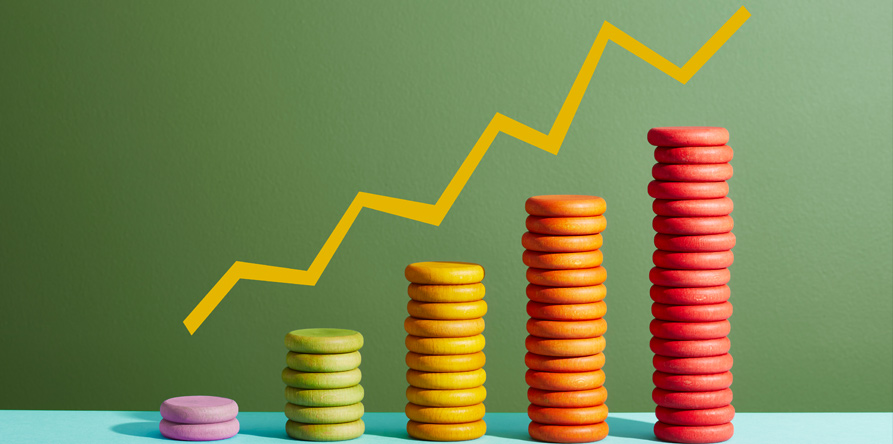
Avoid costly mistakes: A guide to RRSP withdrawals for Canadians
Registered Retirement Savings Plans (RRSPs) are a great way to save and invest toward your retirement, but there comes a time when you are required to start making withdrawals to fund your retirement. You can only contribute to an RRSP until December 31 of the year you turn 71, at which point you have to withdraw all the funds or convert the RRSP into an annuity or a Registered Retirement Income Fund (RRIF). Of course, there are no rules preventing you from dipping into your pool of money before then, but should you?
Although RRSPs are designed to give Canadians a way to grow their money tax deferred to help save for retirement, there may be legitimate reasons you might want or need to withdraw funds before you retire. For instance, you might want to use some RRSP cash to fund a down payment on a home, help out a family member in need or clear up some lingering debts.
While there are some tax-efficient ways to draw on your RRSPs outside of retirement, most of those withdrawals come with a hefty tax bill, since the withdrawn money is treated as taxable income. That’s why it’s critical to understand how any withdrawal will affect your taxes before you make any moves. This guide will help you understand your options and their tax implications.
Early RRSP withdrawals: What you need to know before 71
RRSPs are designed for retirement, so the government discourages early withdrawals. Any money you take out is added to your gross income for the year.
If you normally earn $64,000 and you withdraw $80,000, the Canada Revenue Agency (CRA) will consider your gross income to be $144,000 that year, which would push you into a higher tax bracket. Not only would that eliminate the value of the tax credit you received when you made your contribution, but the money would also be taxed at a higher rate than if you hadn't contributed.
Depending on what you take out, your tax bill could be massive – and for those not used to paying the CRA directly (most people have their taxes deducted from each paycheque), it can be challenging to figure out how much to set aside for taxes on that withdrawal.
That’s why the government takes a withholding tax off the amount you withdraw from your RRSP. You’re paying the government its share of income tax in advance, so you don’t end up spending the money. (Even with the withholding tax, it may not be enough to cover what you owe.)
This RRSP withholding tax varies depending on how much you withdraw and your Canadian residency status. Here are the most recent rates for Canadian residents, excluding Quebec:
- 10% on amounts up to $5,000
- 20% on amounts of $5,000 up to and including $15,000
- 30% on amounts over $15,000
In Quebec, the taxation rates are 19% on amounts up to $5,000, 24% for amounts between $5,000 and $15,000, and 29% on amounts over $15,000. For non-residents of Canada, there is a flat taxation rate of 25% on all RRSP withdrawals, unless there is a treaty in place with the country of which you are a citizen that reduces the rate. For more information, check the Government of Canada website.
Exceptions to RRSP withdrawal taxes: When can you take money out tax-free?
The good news is that there are a couple of scenarios in which the funds you withdraw are not treated as income, and are therefore not subject to the RRSP withholding tax.
1. The Home Buyers’ Plan (HBP)
If you are buying your first home, the HBP allows you to make a tax-free withdrawal of up to $60,000 from your RRSPs to purchase or build a qualifying home for yourself or a qualified disabled person. The caveat is that you must repay the amount you withdrew from any RRSPs within 15 years, and the repayment period starts the year after the calendar year of your first withdrawal. For withdrawals between January 1, 2022 and December 31, 2025 the repayment period would start the fifth year following the year in which the first withdrawal was made. If you don’t pay all the money back, whatever is left will get taxed.
2. The Lifelong Learning Plan (LLP)
With the LLP, you can take out up to $10,000 per year, up to a maximum of $20,000, to pay for full-time education or training for yourself or your spouse or common-law partner. You can withdraw money to cover four years of learning (not necessarily consecutive ones). You have to start repaying the money within five years of your first withdrawal, and then have up to ten years to complete repayments. Note that you will be required to pay back your LLP, even if you become bankrupt.
3. RRSP transfer to another RRSP
There’s one other exception to the RRSP early withdrawal rule: you can transfer them to another RRSP, but you’ll need to ask your financial institution to initiate the transaction.
RRSP withdrawals after 71: What you need to know
At the end of the year you turn 71, you can no longer contribute to your RRSPs, and you must decide what to do with your (or your spouse’s) savings. There are three options:
1. Transfer the funds to a RRIF account.
This is the most popular option. While your RRSP issuer will not withhold tax when you convert your RRSP to a RRIF, you will have to pay tax once your RRIF begins monthly payments. Learn more about RRIFs here.
2. Purchase an annuity with your RRSP funds.
Your RRSP issuer will also not withhold tax on any money from your RRSPs used to purchase an annuity. However, as with RRIFs, you will have to pay tax on the income when you begin to receive monthly payments.
3. Withdraw the funds from your RRSPs.
Just like when you withdraw money from your RRSPs early, withdrawing the money after you turn 71 will cause it to be counted as part of your gross income for the year. If you choose this option, your RRSP issuer will withhold tax.
If you need help figuring out which decision is right for you, be sure to speak with your financial advisor. You can also learn more about your retirement options here.
Before tapping into your RRSPs early, think about your reasons for withdrawing and whether the tax trade-off is worth it. If money is going to be used to further your training or education, or to purchase or build a qualifying home, you may have withdrawal options. If you need the money for another reason, you may be better off withdrawing money from a Tax-Free Savings Account, non-registered account or even taking out a loan.
It’s crucial to maximize the benefits of your RRSP and only take the funds out when you actually hit retirement. Your retirement will thank you.


